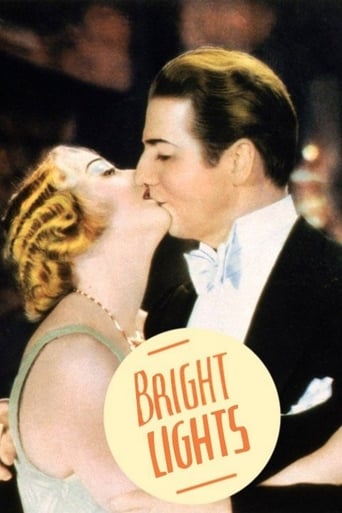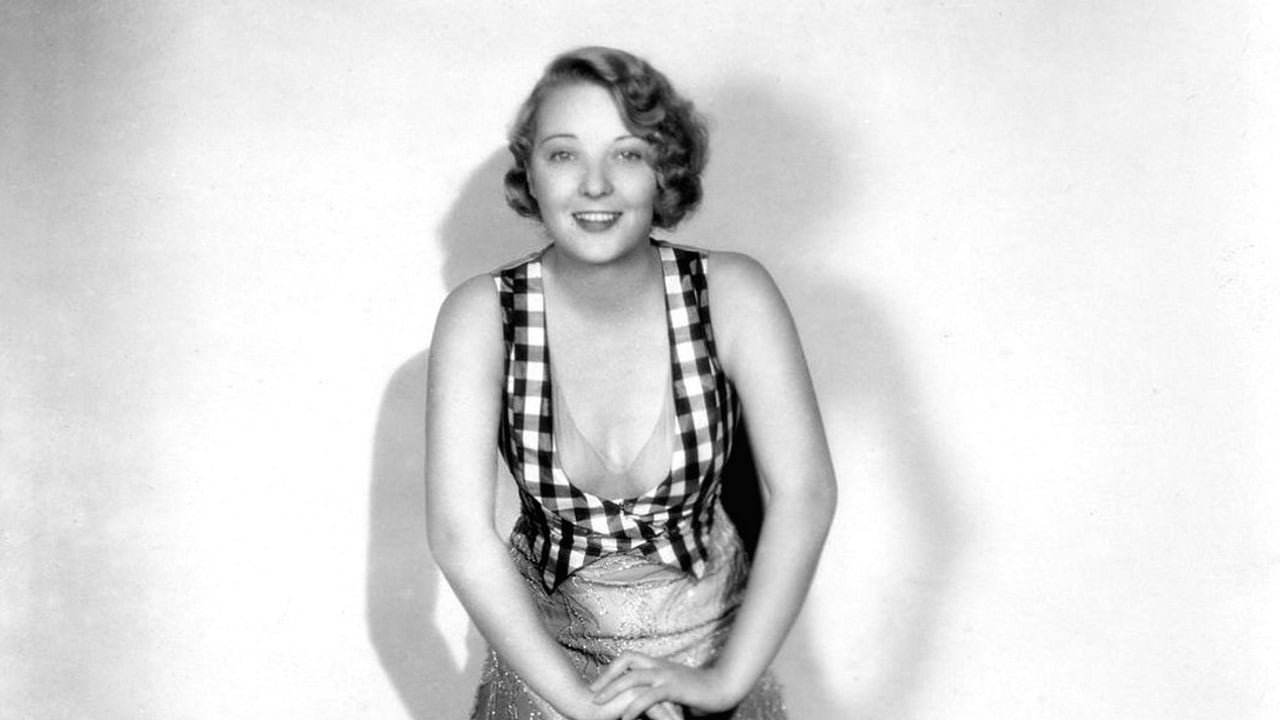GManfred
A musical/comedy/drama starring some long-forgotten Broadway and Hollywood stars. Dorothy Mackaill stars as Broadway star hiding her sleazy past from her tycoon fiance. Her partner is stage actor Frank Fay, who is about to lose her to marriage, and Noah Beery plays the heavy who remembers her 'way back when'. There are several musical numbers interspersed but the songs are not memorable - long forgotten, like this picture. There are scenes that are alternately dramatic and comical, as the film can't decide which it is.It was entertaining, particularly if you are a "movie archaeologist" and enjoy seeing stars of long ago, stars who haven't seen the light of day in years. I like Mackaill and had never seen Fay, although my parents talked about him from his stage roles. Frank McHugh as a drunken (as usual) reporter, Eddie Nugent and Daphne Pollard are some of the other names sure to please old movie fans.6/10 - The website no longer prints my star ratings since the changeover.
ksf-2
The title actually says "Adventures in Africa", but it's listed on Turner Classics as "Bright Lights!". and the trivia says there's a lost technicolor version, but personally i'm glad its in glorious black and white... i like my early talkies to be in charming but ancient black and white. a bare minimum of a story. In this show-within-a-show, Frank Fay is Wally, the emcee of the big production. Dorothy Mackaill is Louanne, about to leave the show and marry into money. the other big names are Noah Beery as the interloper, and funny guy Frank McHugh as the reporter, always lurking about. he's listed way down in the credits, but he's in almost every scene. one of his first roles in hollywood. This was before any film code, so there's an abundance of cleavage and walking around in night-gowns. one of the running gags is the Averys, husband and wife who are continually nagging each other. LOTS of song and dance numbers, but it keeps moving along. it's fun... light and fluffy. A Curtiz production... probably his best known films were Casablanca and Yankee Doodle Dandy.
mukava991
"Bright Lights" (re-named "Adventures in Africa" for TV broadcasting many years after its release) is a cinematic Mulligan stew consisting of a murder mystery, multiple love stories, several musical numbers, and tedious stretches of low comedy barely held together by a witless and improbable script about a show girl (Dorothy Mackaill) who, with her partner- manager (Frank Fay) shimmies her way from small-time tropical dives and traveling carnivals to the Broadway big-time only to announce that she's giving up the stage to marry into wealth (in the person of Philip Strange as Mr. Emerson Fairchild of Long Island whose accent is British but whose mother's is Midlantic). The Fay character loves and protects Mackaill in a fatherly or businesslike manner but refrains from marrying her; every time he is about to give in to that urge he pulls back because some part of him senses that he is not worthy to be her husband. Mackaill finds his hot/cold behavior frustrating and infuriating. The development of this complex relationship takes a back seat to sometimes heavy-handed subplots enacted by the likes of Eddie Nugent in an ill-defined role (star's press agent?) eagerly trying to manage a gaggle of reporters which includes a barely visible young John Carradine and an all-too-visible Frank McHugh as an obnoxious drunk, who have assembled to cover Mackaill's final performance; James Murray and Inez Courtney as young lovers; Tom Dugan and Daphne Pollard as a violently discordant married dance team; Noah Beery as a lecherous figure from Mackaill's and Fay's sordid African past. Other, later, pre-Code films with similar elements include "I'm No Angel," "Forty-Second Street," "Murder at the Vanities" and Mackaill's outstanding 1932 feature "Safe in Hell."As far as the songs go, "Wall Street" near the beginning, despite a stage-filling chorus and carloads of set pieces and costumes, falls flat, even with expert song-and-dance man Fay at the center. He comes off better in the Harry Akst-Grant Clarke standard "Nobody Cares If I'm Blue." In dramatic scenes, however, his haggard appearance distracts from his emotionally nuanced performance. The makeup applied to his rugged features suggests Count Dracula and clashes with his gently rapid speaking voice and smooth singing style and stage manner. Among the other musical numbers, "Song of the Congo," "I'm Crazy for Cannibal Love" and "I'm Just a Man About Town" are the catchiest, both visually and melodically, though one can't help wondering what Busby Berkeley might have done with the staging. Mackaill is the centerpiece of all three; she performs a hula-type dance in the first two and wears a man's tux and top hat in the first half of the latter before emerging via camera trickery from the huddle of a male chorus wearing a dress. She also has some effective dramatic moments but, due perhaps to sloppy editing, misfires during a poorly staged dressing room temper tantrum. Her vocal range is limited, but she carries her songs confidently, dances gamely and looks magnificent in skimpy, spangled costumes as well as in screen-filling closeups.
humbugmsw
I watched "Bright Lights" (1930) for the first time on TCM last night and felt that it would've been better if we could see it like it originally was presented. First of all, I wish the film could be reconstructed. It seems disjointed in places because the movie was truncated between the time it was filmed and the time it was released. It's obvious that a few songs are missing. The part played by James Murray seems to have suffered the most. He was wonderful in King Vidor's "The Crowd" (1928). I knew of his tragic early death, but wondered if he truly showed promise, or was a one-time flash-in-the pan. His acting ability in this talkie was pretty good. His potential in sound movies can only be conjectured.The screenplay was strong for the time, with witty lines and novel dramatic situations. There were unexplained holes in the plot, seemingly because of the cuts, not the screenplay. The dialog and gags delivered by Daphne Pollard and Tom Dugan were unexpected. Frank Fay's performance is likely the best he ever did on the screen. His delivery of the song, "Nobody Cares" is excellent. However, Dorothy Mackaill's singing and dancing are weak, to say the least. The film stands out from other films of the time because of director Michael Curtiz and cinematographer Lee Garmes. Some shots are set up creatively. The visual pacing is above average for the time. There obviously was care and preparation used in making this film.Now to the point of Technicolor. I think to film would make a much stronger impression on us if we could see it in the original color. The seemingly harsh make-up would have been more palatable in color. The costumes and musical numbers were obviously designed with color in mind. As we see it now, in mere black-and-white, the numbers pass in a blur of overblown activity. They are unquestionably over-done, probably to take the focus off Dorothy Mackaill's limited singing and dancing, but would be more impressive if we could see them in color.It is unfair to judge "Bright Lights" as it exists today. We can only dream of what it originally was like. Only then it would seem better than we had originally thought!


 AD
AD


